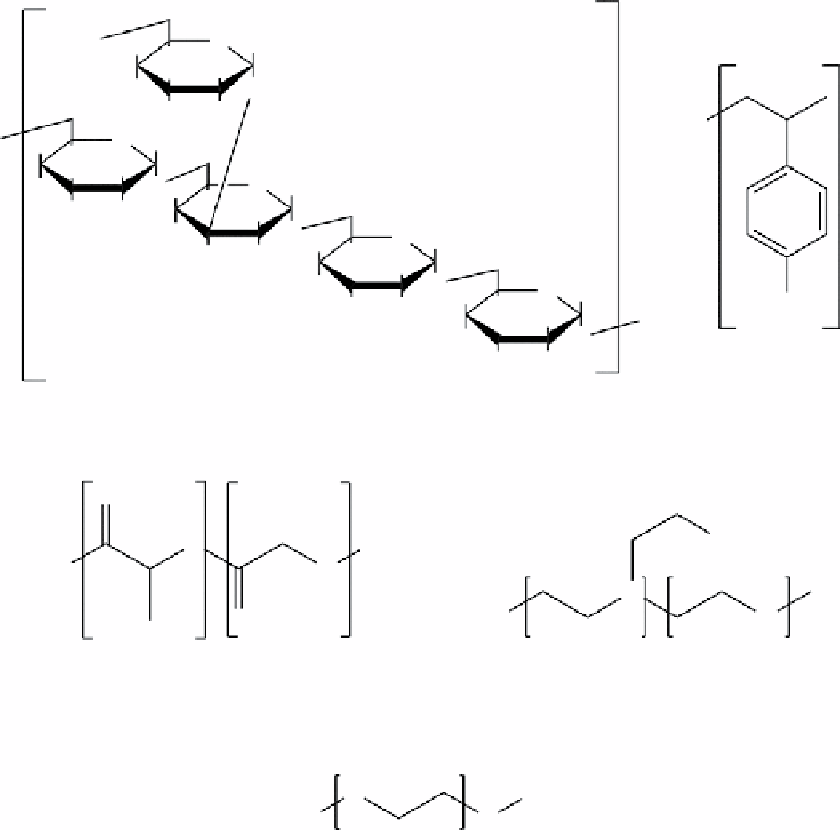Chemistry Reference
In-Depth Information
Dextran
PSS
O
H
H
H
OH
H
O
OH
H
OH
O
H
H
H
H
OH
O
O
H
OH
H
H
OH
H
H
O
OH
O
H
H
H
H
OH
H
O
OH
O
H
H
SO
-
H
H
OH
H
n
O
OH
OH
H
n
PLGA
PEI
O
NH
2
O
H
HO
O
N
H
2
N
H
O
y
x
y
x
PEG
O
H
H
O
n
FIgure 9.8
structure of some of the most common polymers used for the stabilisation of nanoparticulate MRI contrast agents in
aqueous media. Pss: polystyrene sulfonate, PLGA: poly(lactic-
co
-glycolic acid), PeI: polyethyleneimine, PeG: polyethylene glycol.
terminal groups. They can also, after terminal modification, be coupled to other molecules such as polymers. There are now
examples in the literature of water-soluble nanoparticles stabilised by phosphate-PeG molecules [67], silane-PeGs [48],
polyethyleneimine-PeGs [91], phosphine oxide-PeG [68], poly(α, βaspartic acid)-PeG [92], and gallol-PeG [93].
9.5.2
organic coatings: Hydrophobic Interactions
A different way of stabilising the nanoparticles in water is to maintain the original organic layer on the surface and use it to
attach a second organic layer by means of hydrophobic interactions. A similar strategy to this is the encapsulation of the
nanoparticles inside liposomes or micelles, which are stabilised by the same kind of hydrophobic forces. In this case the
interaction between the outer organic layer and the nanoparticle is weaker and highly dependent on the environment. Results
obtained with this kind of nanoparticle have to be carefully analysed, and control experiments should be thoroughly designed
because some reports have demonstrated the low stability of this approach
in vivo
[94]. However, this approach presents the
advantage that the coating can be used to simultaneously solubilise the nanoparticles and to encapsulate pharmaceuticals for
possible drug delivery applications. As demonstrated in the previous section, individual molecules [91, 95-98] or polymers
[91, 99-101] can be used. All of them are amphiphilic molecules with a hydrophobic part (usually an aliphatic chain) plus a
more hydrophilic head that facilitates water solubility as well as a starting point for further functionalisation. This approach
involving hydrophobic interactions has not only been used with metal oxides nanomaterials. For example, seo et al. used

